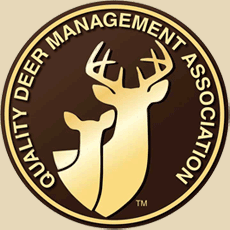Admit it, if you are an outdoorsman or woman the sight of a bobcat in the woods is exhilarating. There is something about this elusive and beautiful animal that brings a bit or awe to us when we are fortunate enough to see them.
Many are so enthralled at the sight of a bobcat that many thousands are shot by deer hunters annually. Taxidermists tell me that the bobcat is the number one full body mount of mammals they do because everyone loves how beautiful they are. While shooting a bobcat from a deer stand is exciting for some, intentionally calling in and killing bobcats is a whole different kind of excitement.
My introduction to calling cats came several decades ago while calling for fox in Newberry County, SC. I began predator hunting over twenty years ago, long before coyotes took up residence in every county, so I began by calling fox. Grays and reds were all subject to my passion for calling predators.
I sat up near the Saluda river, in some thick brush were a gray was spotted a few months before during a deer hunt during archery season. The location was marked and when deer season closed, I was hunkered beside a large oak with my Benelli loaded with some 2 ¾” number 5’s. After letting the woods quiet down, I began blowing my cottontail distress call as loud and hard as I could. For over seven minutes I blew the call and eased it down and waited to see what would happen. Suddenly, movement caught my eye at 22 yards, a bobcat was looking at me from behind some brambles, I turned and introduced him to Mr. Benelli. From that day on I learned that calling cats was not only possible, but very addictive.
I set out to change my tactics from focusing on fox, and trying to intentionally call cats. What I learned is simple, this first kill was an anomaly for calling and killing bobcats. They seldom ever respond to calls this quickly, the only thing I could surmise is that I happened to set up close to where this cat was laying up for the day.
Calling cats is a test of patience. When cats respond to calls they mostly do so slowly and cautiously. Decoys help, but not much, but they are worth the effort. But above all else, I believe the key to calling cats successfully is calling where cats are. While this sounds so obvious, what the point is, to scout for signs of bobcats, know they are there and then to set up in as open an area of woods as you can find. Cats don’t like to expose themselves, calling them in the fields or open areas is mostly futile. I prefer open hardwoods boarding thick creeks or rivers. Being able to see for as far as possible is critical.
Last year, I took my daughter out to try and call some bobcats. She is a dedicated predator hunter, loving calling animals better than sitting in deer stands for hours on end. We sat up in some freshly thinned pines that bordered a creek flowing along an oak ridge. After about twenty minutes of calling, a large Tom emerged fifty yards beyond the range of my 12 gauge. I began squeaking to try and coax the cat closer. At the sound of my squeaks, the Tom turned looked at our direction and promptly sat down. Further enticements only caused the cat to lay down and keep looking in our direction. (If I had my decoy the motion could have brought him on in). For a full thirty minutes this cat lay looking and listening. Finally, I whispered to my daughter, we are in a stalemate. Let’s just sit still and see what happens. After another ten minutes, the Tom rose and began trotting in our direction. As soon as he reached thirty yards, I shot and ended the hunt.
Fox, often respond very quickly, often while on the first cadence. Coyotes will usually circle and look. Cats will come, but they come slow, cautious and guarded. But when the hunt is over, one knows that the trophy of harvesting a mature bobcat was worth the challenge and patience needed to succeed as a predator hunter.






